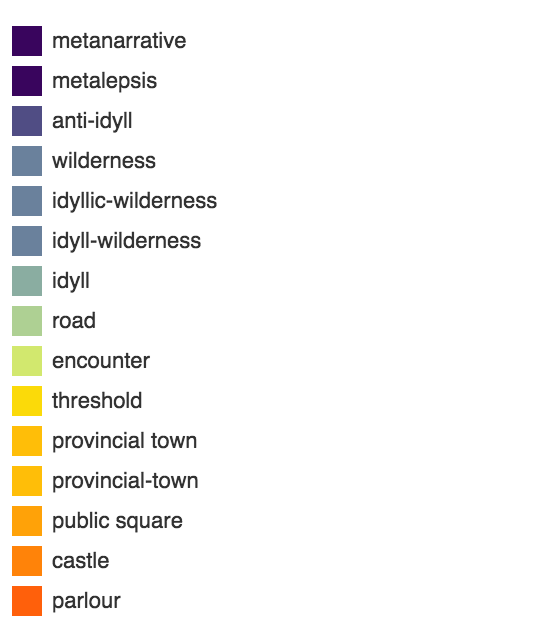CHRONOTOPES
Chronotopes
A core concept behind the visualisation model is Mikhail Bakhtin’s "chronotope" or time-space for literature. These are represented on the map by colour values
In "Forms of Time and of the Chronotope in the Novel", Mikhail Bakhtin describes various forms of chronotope. Bakhtin’s categories are represented by a list of colour values which to represent different kind of spatio-temporal phases within each text.
The colours used throughout the visualisation correspond to Bakhtin’s range Chronotopes. The chronotope colours used the terrain merge and blend to give an overall impression of the range of predominant chronotypes that are prevalent in each space

VISUALISATIONS
Example Visualisations
Several types of sample texts have been marked up using CLAYE, the 'Comparative Literyscape AnalYsis Encoding' toolset. This is a custom XML schema designed to capture the qualitative linguistic aspects of literary spaces and temporalities The list of examples here will be added to as the project progresses.
Click on the titles to launch the visualisations.
Narrative Novels
Examples visualisations from narrative novels
Poetry
Examples created from poetic texts
C. S. Lewis
Examples from the works of C.S. Lewis
Additional Texts
Recent additions
![[image]](images/logo.png)
